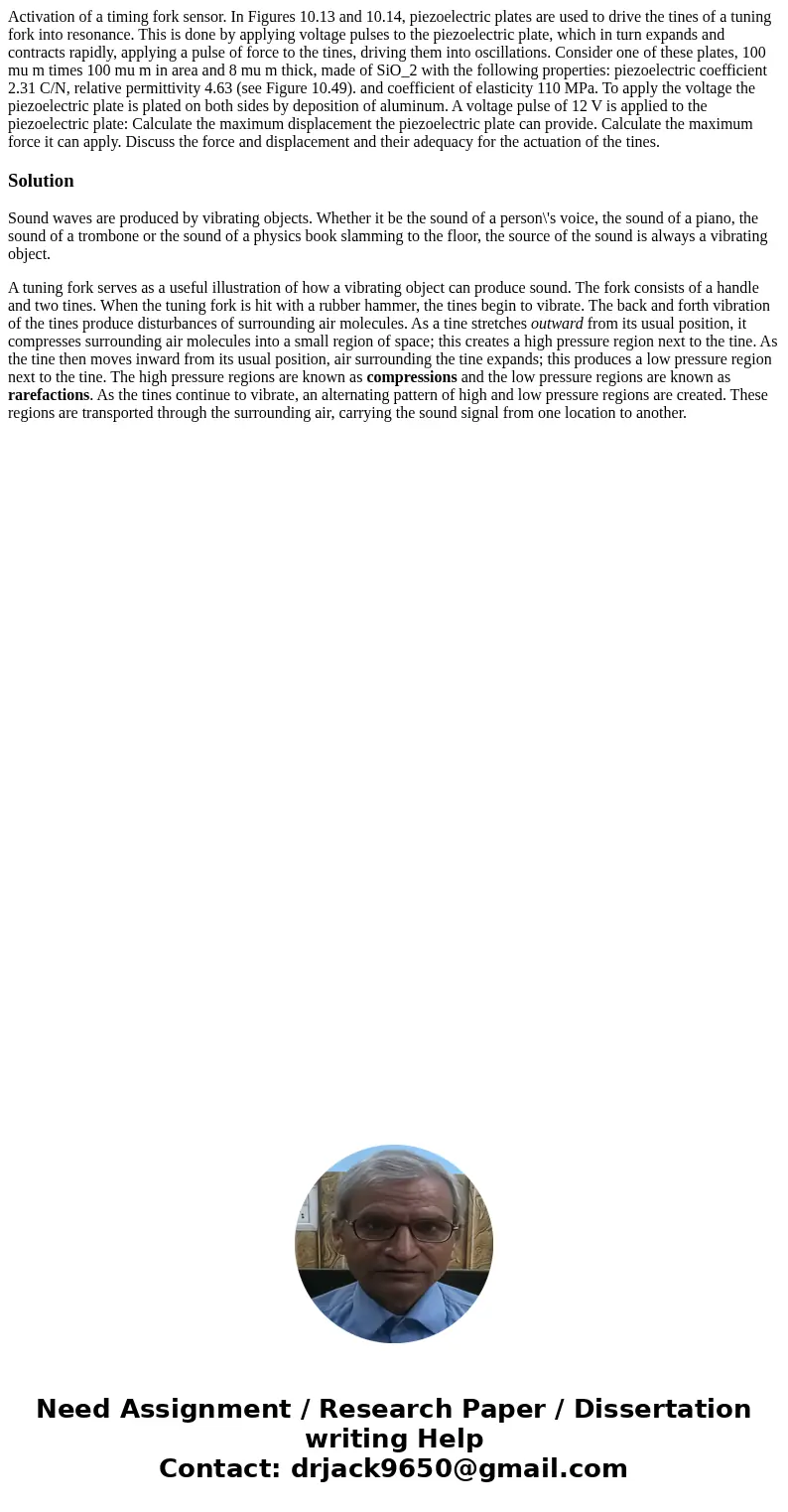Activation of a timing fork sensor In Figures 1013 and 1014
Solution
Sound waves are produced by vibrating objects. Whether it be the sound of a person\'s voice, the sound of a piano, the sound of a trombone or the sound of a physics book slamming to the floor, the source of the sound is always a vibrating object.
A tuning fork serves as a useful illustration of how a vibrating object can produce sound. The fork consists of a handle and two tines. When the tuning fork is hit with a rubber hammer, the tines begin to vibrate. The back and forth vibration of the tines produce disturbances of surrounding air molecules. As a tine stretches outward from its usual position, it compresses surrounding air molecules into a small region of space; this creates a high pressure region next to the tine. As the tine then moves inward from its usual position, air surrounding the tine expands; this produces a low pressure region next to the tine. The high pressure regions are known as compressions and the low pressure regions are known as rarefactions. As the tines continue to vibrate, an alternating pattern of high and low pressure regions are created. These regions are transported through the surrounding air, carrying the sound signal from one location to another.

 Homework Sourse
Homework Sourse